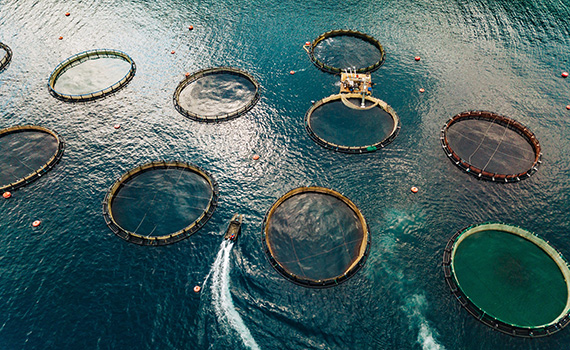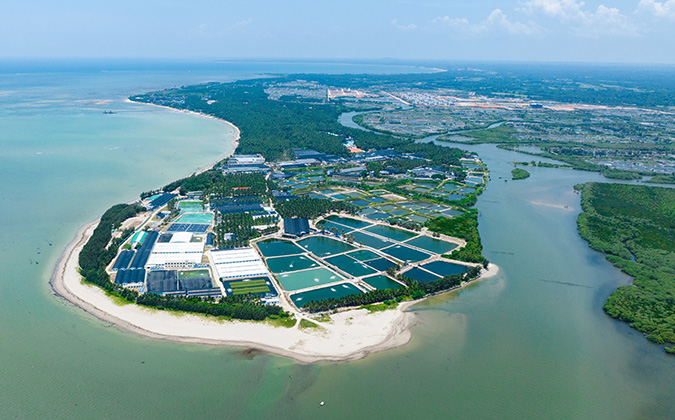
Fish Farm Forum is pleased to host this editorial page on behalf of Pharmaq.
Pharmaq
Non-medicinal delousing approaches cause damage to salmon gill tissue
New research shows that thermal and mechanical delousing techniques used in Atlantic salmon aquaculture can cause damage to gill tissue, though the health impacts of this on farmed fish remain unknown.
The work, by PHARMAQ Analytiq, Mowi ASA, Måsøval AS and Norwegian University of Life Sciences,1 put three pens of fish on commercial sites in west and northwest Norway through the two non-medicinal sea lice treatments. The fish had not previously been deloused, had no known health issues and had similar times of sea transfer.
Gill damage, pathogen increase seen
The applications demonstrated that both approaches can cause gill lesions, while a series of tests following thermal delousing showed increased levels of the pathogen Candidatus Branchiomonas cysticola (Ca. B. cysticola) and expression of genes involved in cell stress, inflammation and repair.
The lesions found in the study accounted for an average of less than 2% of salmon gill tissue. The researchers noted that while this reduces overall gill capacity, no conclusions can be made about the broader impact on fish at this stage.
After mechanical delousing, lesions tended to appear after 1 or 2 days, while after the thermal methods, they appeared after 8 or 9 days. Different parts of the gills were affected by the varying treatments.
Cumulative effects?
With farmed salmon being treated for sea lice anywhere up to 11 times in a production cycle,2 excluding feed treatments, the researchers raised the possibility that these repeated treatments may have a cumulative effect over time.
Currently, due to resistance to drugs used against sea lice, the most common methods for delousing are non-medicinal, with thermal delousing being used the most, followed by mechanical, explained Liv Østevik, DVM, of PHARMAQ Analytiq, who led the research. Freshwater bath treatments have also increasingly been used in recent years due to concerns about the welfare impacts of mechanical and thermal approaches, she said, while some companies are opting for a combination of approaches.
Despite some of the negative impacts seen in handling and treating fish for sea lice, leaving fish untreated is currently not an option, Østevik noted.
“Not treating fish for sea lice may lead to poor welfare and performance, as these parasites can cause skin erosion and ulcerations and, in severe infestations, even death. Controlling lice numbers in farmed Atlantic salmon is also considered crucial to protect wild salmonid stocks,” she said.
Indirect impacts need exploring
While there is clear evidence of a negative welfare impact of non-medicinal delousing compared to medicinal feed or bath treatments, understanding the effects of different non-medicinal approaches will be important for the continued management of the parasites in aquaculture, she stressed.
Previous research and trials had recorded gill vascular lesions, aneurysms, hemorrhage and thrombi, but the differences seen in lesions between the two types of non-medicinal treatment in the study proved surprising, Østevik said, with more work necessary to determine whether the injuries could be attributed to the different mechanisms involved.
“There is also still a lack of knowledge about indirect and long-term effects of non-medicinal sea lice treatments on fish health,” she continued.
“For instance, recent research showed that clinically healthy Atlantic salmon with ‘hidden’ Yersinia ruckeri infections can excrete significant amounts of bacteria during thermal delousing. In our study, we found an increased pathogen load of Ca. B. cysticola after thermal delousing, suggesting that treatment may impact the dynamics of pathogens present in the fish at the time of delousing.”
1 Østevik L, Stormoen M, Evensen Ø, Xu C, Lie K, Nødtvedt A, Rodger H, Skagøy A, Manji F, Alarcon M. Effects of thermal and mechanical delousing on gill health of farmed Atlantic salmon (salmo salar L.). Aquaculture. 2022:738019.
2 Østevik L, Alarcon M, Hellberg H, Lie KI, Kraugerud M, Stormoen M, Skagøy A. Risk factors, indicators and strategic management of gill disease in Atlantic Salmon. Research project report. 2022 April:1-77.
Posted on: March 28, 2022







